Our Blog - Santiago de Compostela, Spain
Since we were heading through the North-West part of Spain, we had to stop in Santiago de Compostela. Until we moved to France and started looking at Spain, we "kinda" had heard of it, but hadn't really looked into it. The city has its origin in the shrine of Saint James the Great (now the Cathedral of Santiago de Compostela) as the destination of the Way of St. James, a leading Catholic pilgrimage route since the 9th century. There are multiple routes ... with the "Arles Way" coming through Toulouse. The scallop shell is the symbol of the route, called the Camino de Santiago (Path of Santiago), and you see them everywhere marking the path as well as buildings and sights.
A bit of background on Saint James ... According to legend, the apostle Saint James the Great brought Christianity to the Iberian Peninsula. In 44 AD, he was beheaded in Jerusalem and his remains were later brought back to Galicia, Spain. Following persecution of Spanish Christians by the Romans, his tomb was abandoned from the 3rd century until the 9th century, which it was found after seeing strange lights in the sky. This was seen as a miracle and King Alfonso II ordered a chapel created on the site.
We made our way to the Praza do Obradoiro, the main square with the Cathedral, which is the final point on the Camino. Here you could see lots of groups of people who had been walking the route and had finally made it to the Cathedral.
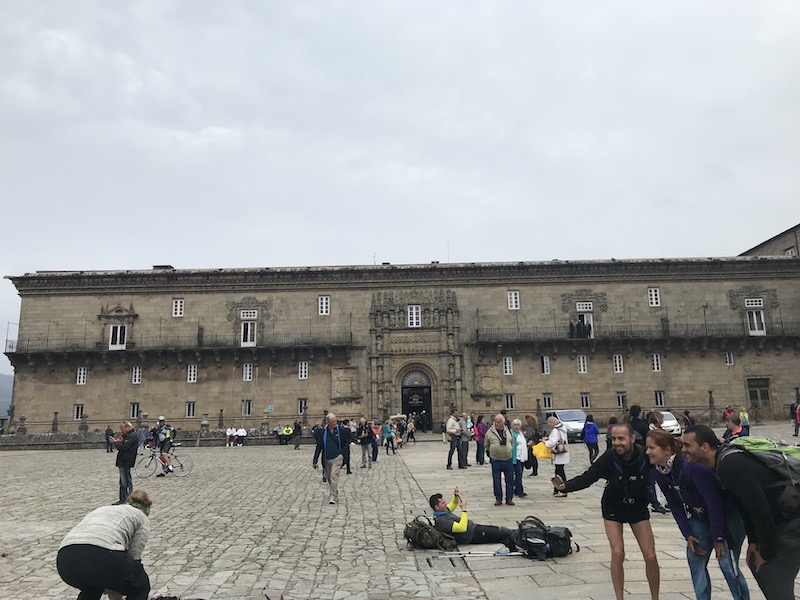
The building you saw in the background above is the Hostal dos Reis Católicos, which was started in 1501 by the Catholic Monarchs in order to take care of the sick and pilgrims. The main portail is full of carvings. At the top is a window of the Royal Chamber, where monarchs would stay during visits, surrounded by the images of Christ, the Virgin, St. James, St. John the Evangelist, St. Peter and St. Paul. Just below you find the figures of the twelve apostles along the frieze of the doorway, and then on the right and left, large statues of St. Catherine and St. John the Baptist on the left and those of St. Lucy and Mary Magdalene on the right. The large shield shows the coat of arms of Castile.
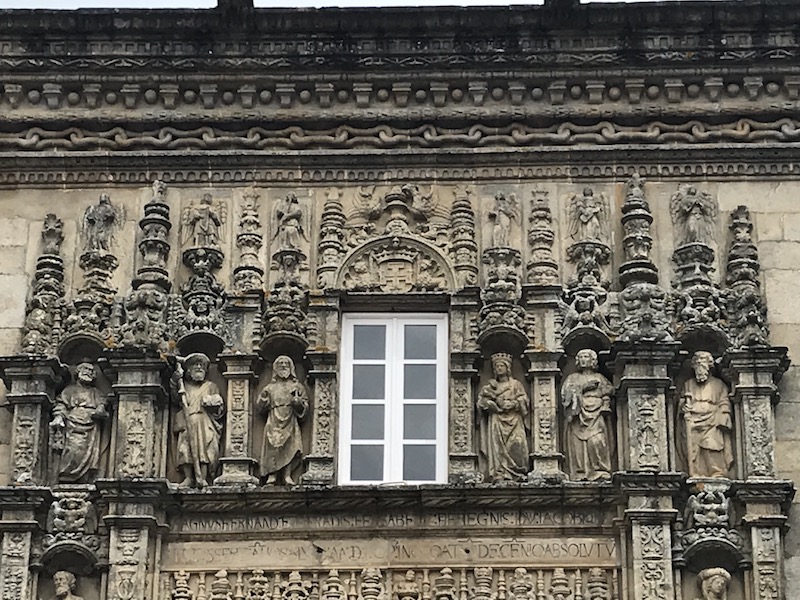
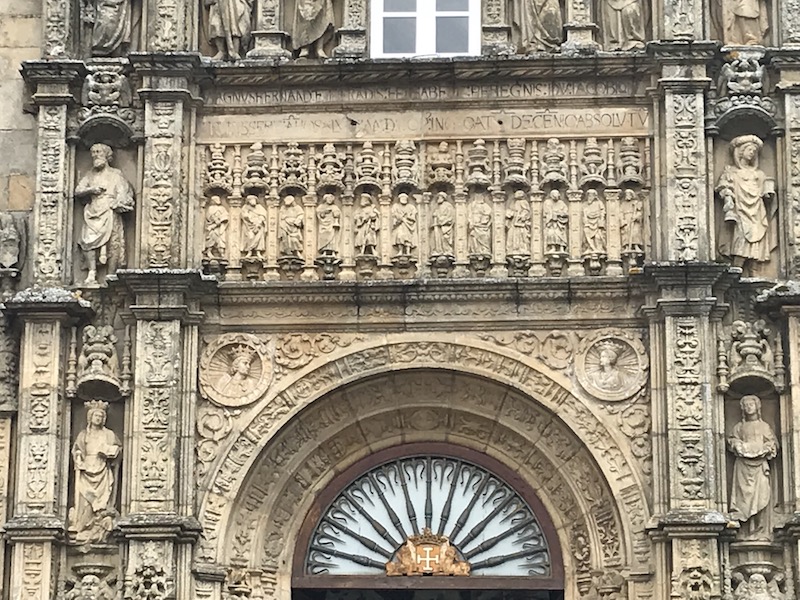
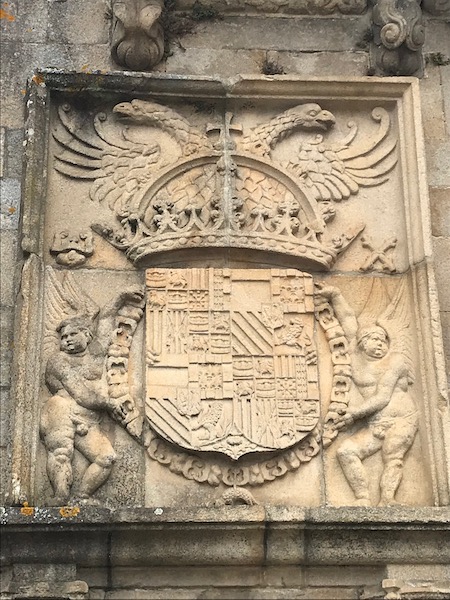
Turning around the square (Cathedral behind you), and you see the Pazo de Raxoi, which is the seat of the city and regional governments. The French neoclassical palace was completed in 1776. Its main facade is structured following a symmetrical scheme ordered through a triangular central pediment and two lateral semicircular fronts that rest on Ionic columns. The central pediment has a relief in which the battle of Clavijo is represented.
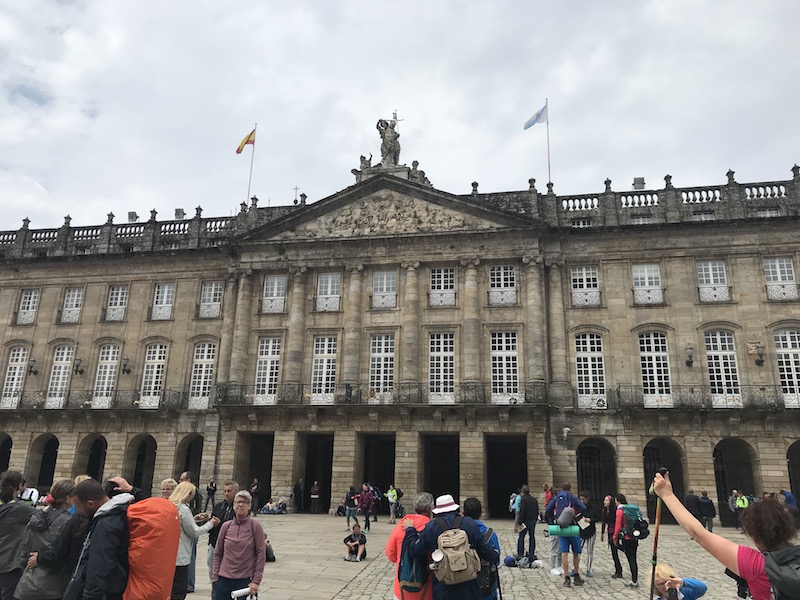
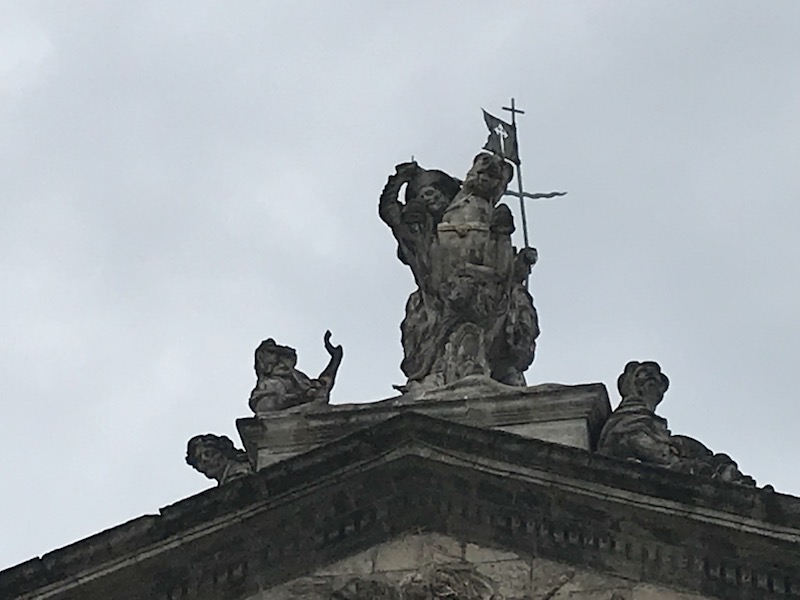

Now turning to the 3rd building on the square, the Palacio de Fonseca. This 16th century building was finished in 1544 although the facade was done later, in 1688. Originally dedicated to theological studies, the Renaissance façade has statues representing the Doctors of the Church. Above them is the coat of arms of Fonseca. It is the General Library of the University ... gee ... my university didn't have any buildings with such a grand staircase and stained glass!


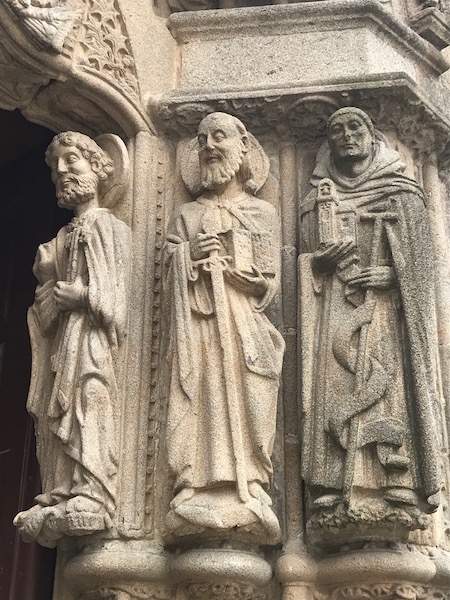
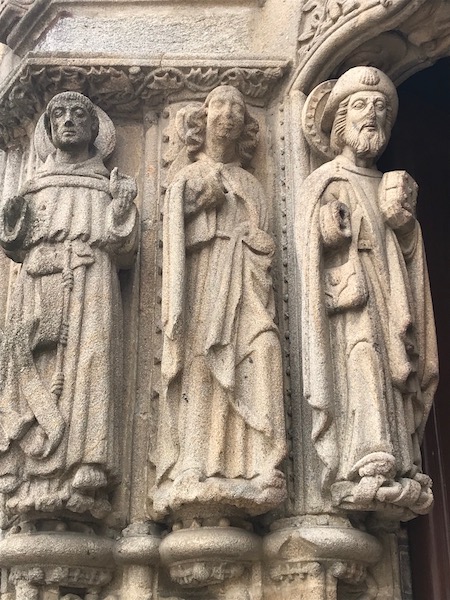
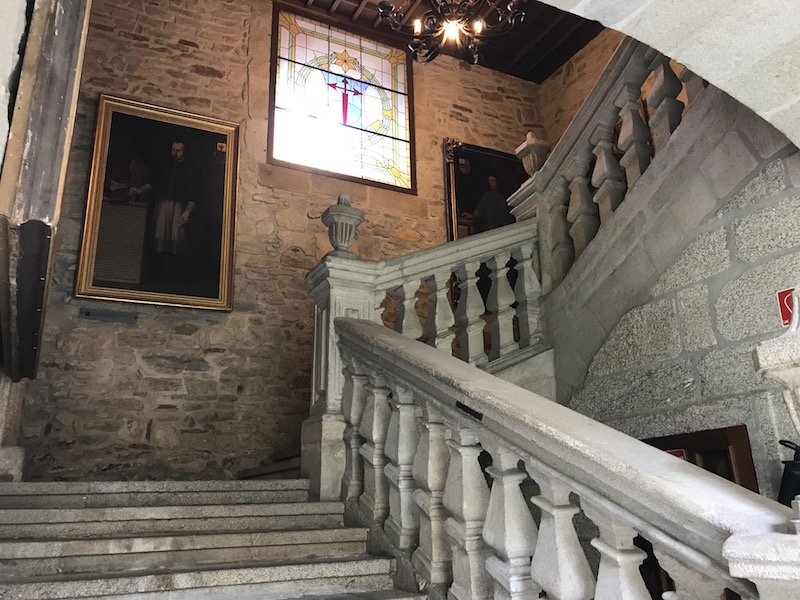
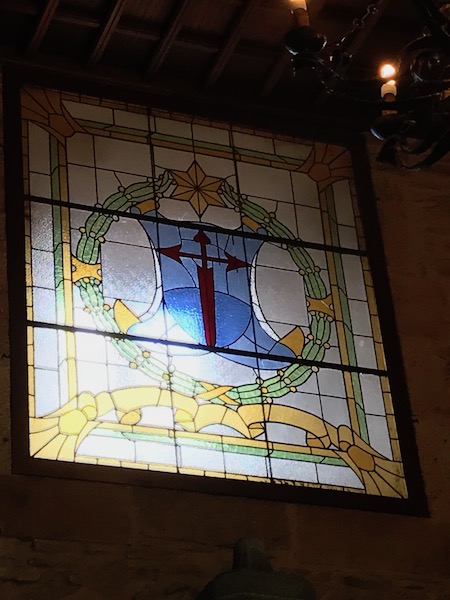
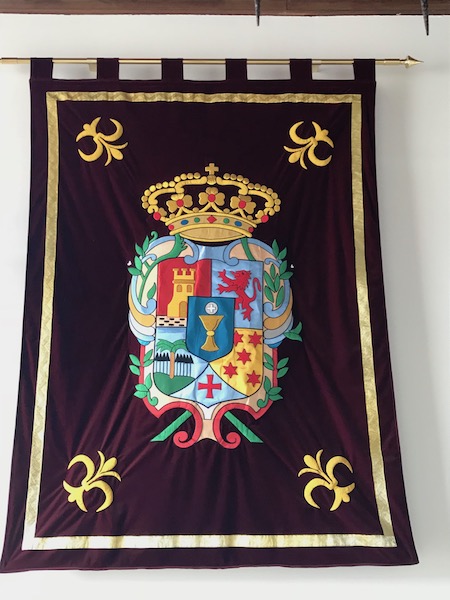
Now the most important building, the Cathedral (which of course, has construction works going on and so part of the facade is covered, as well as the main entry door. The current Cathedral was built between 1075 and 1211, when it was consecrated in the presence of King Alfonso IX. It is actually huge, with not only the main part seen here, but also 2 more wings that take up the entire width of the massive square. The Baroque façade was added in the 18th century to protect what is called the "Door of Glory", which unfortunately we were unable to see.
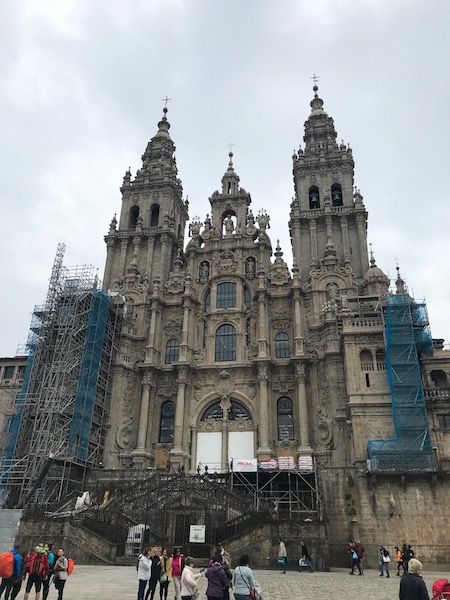
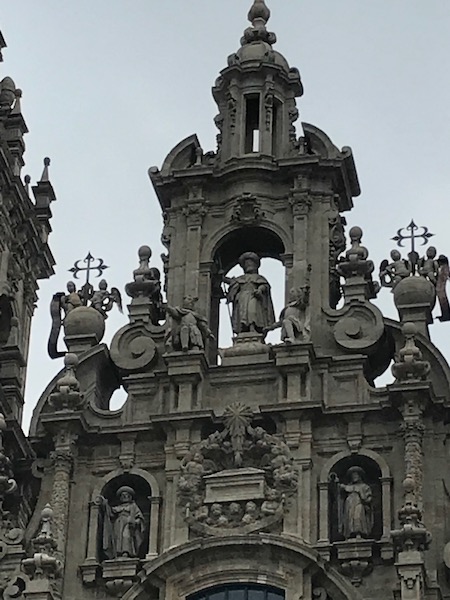
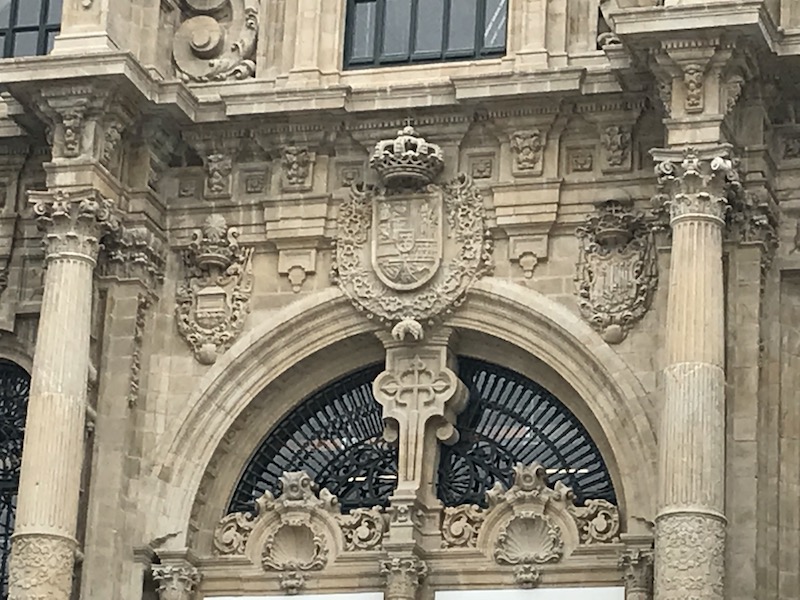
We ended up entering through a different door on the right-hand side, which is the only Romanesque façade that is preserved in the cathedral. In the central frieze is Christ, with various characters and scenes. On the right six figures belong to the choir of Master Mateo that were placed in the late 19th century. The archivolts are attached over eleven columns, three are of white marble (middle and corners) and the rest of granite. In the center are the figures of twelve prophets and the Apostles on the sideline.
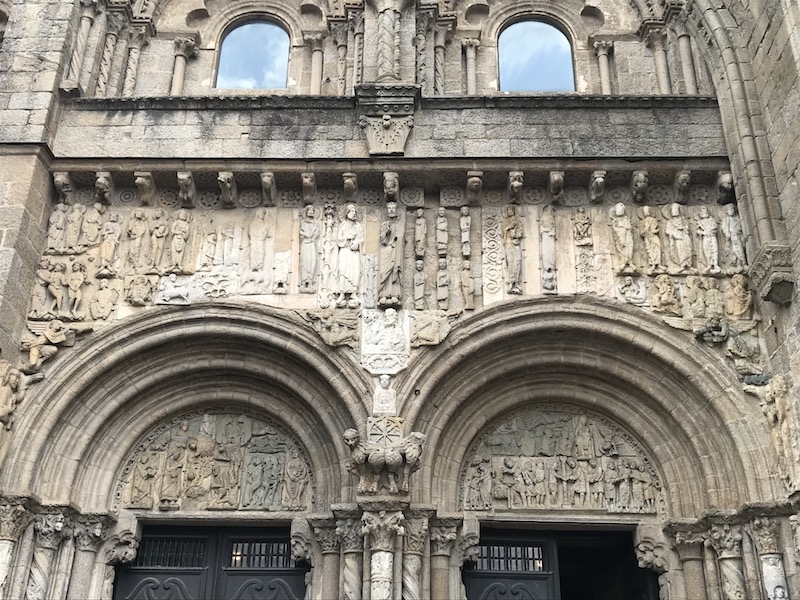

The inside (for me personally) was not really what I expected based on the exterior. It seemed a bit "bland". Part of it could be that the high altar was *also* undergoing some work and so we couldn't really get the best view of it. It had 2 nice organs with highly carved bases.
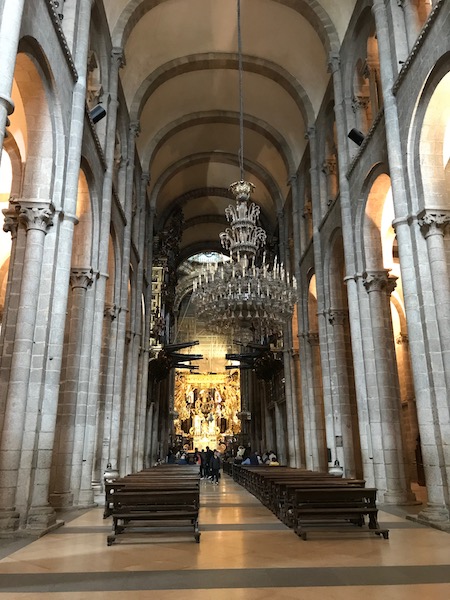
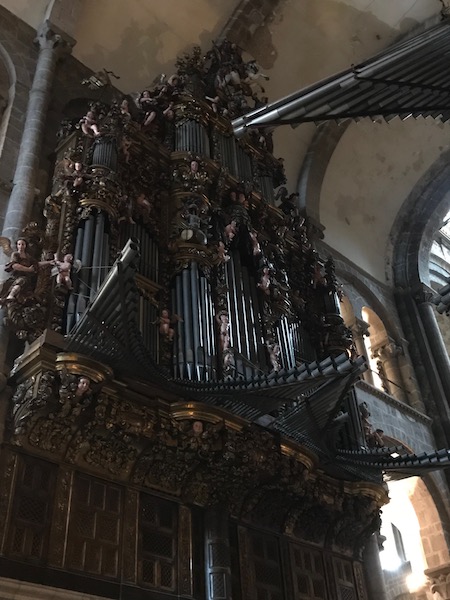
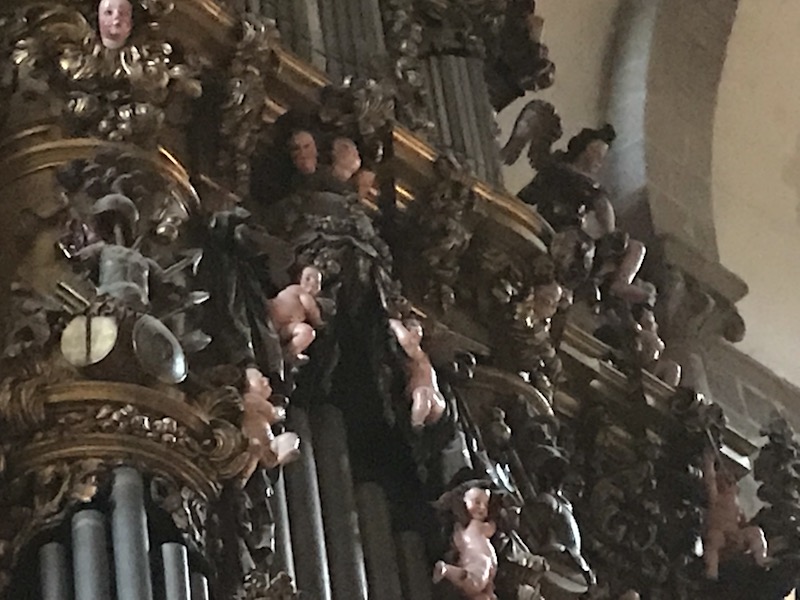
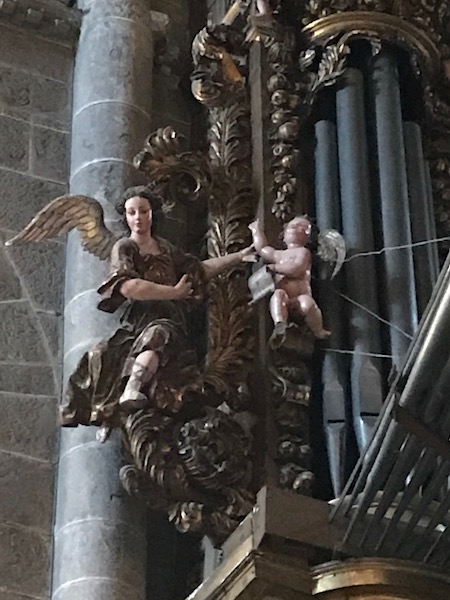
Here is about all I could get of the high altar .. I guess we'll have to make another trip down there when it is all completed.


The crypt houses the relics of Saint James (in a silver reliquary from 1886) and two of his disciples, Saint Theodorus and Saint Athanasius.
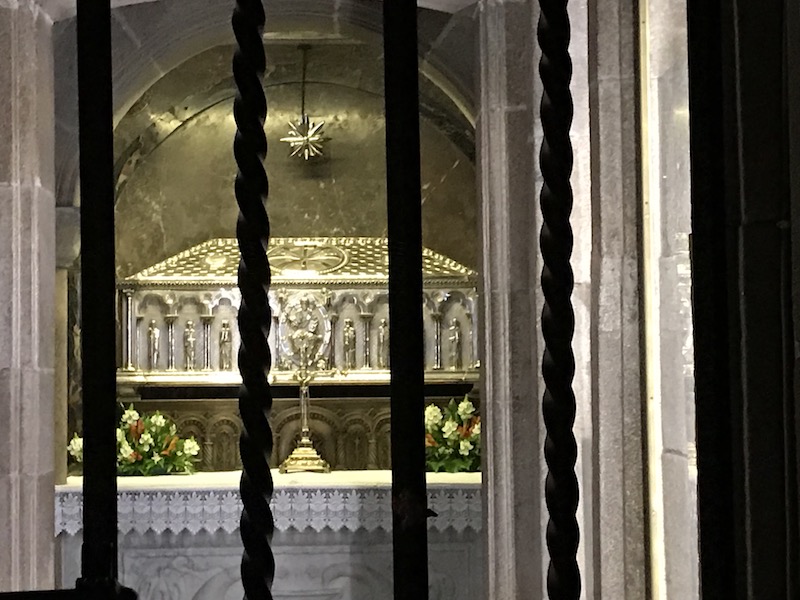
There are a variety of side chapels that were all nice ... I didn't write down what each one was, but I'll let you enjoy the pictures. The last one, you can get an idea of my "bland" statement above. While the altarpiece itself is really nice, it is surrounded by basically concrete walls with little (if any) decoration.
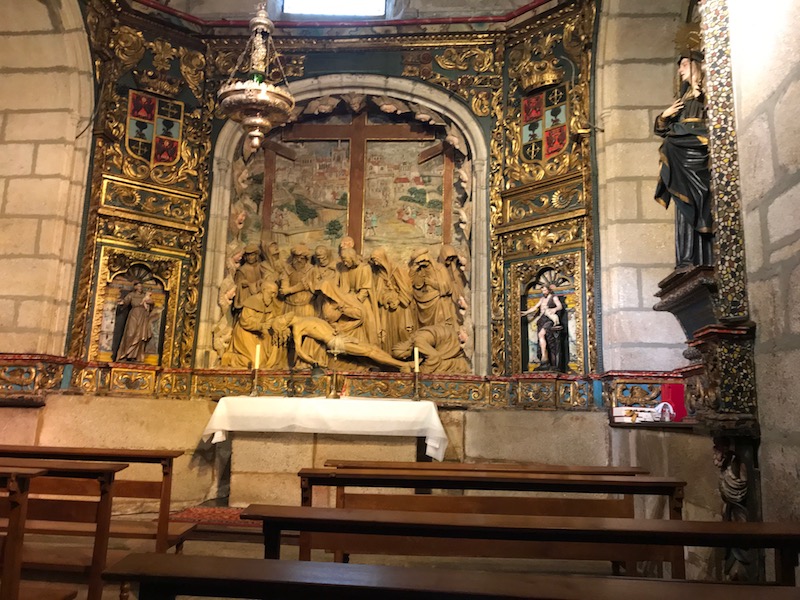

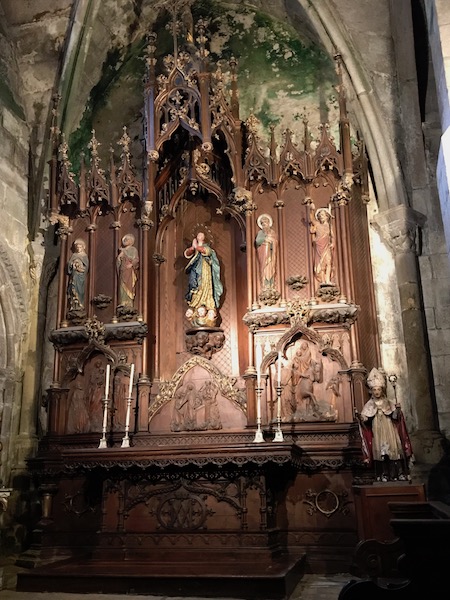
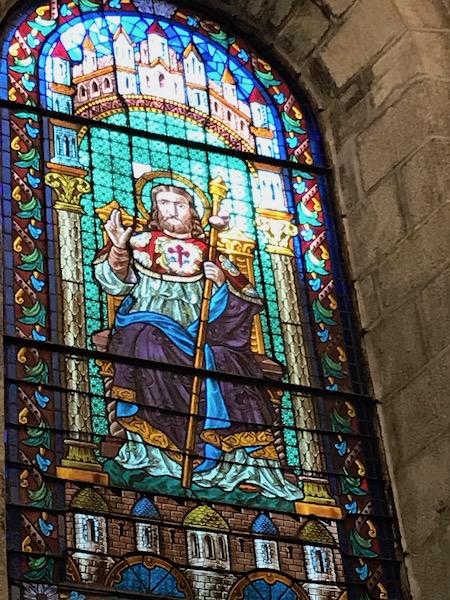
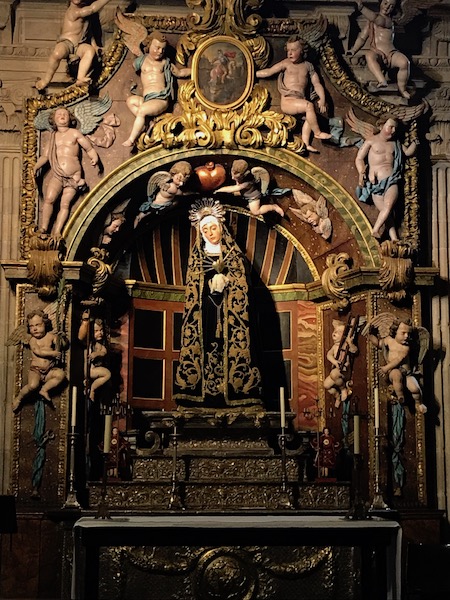
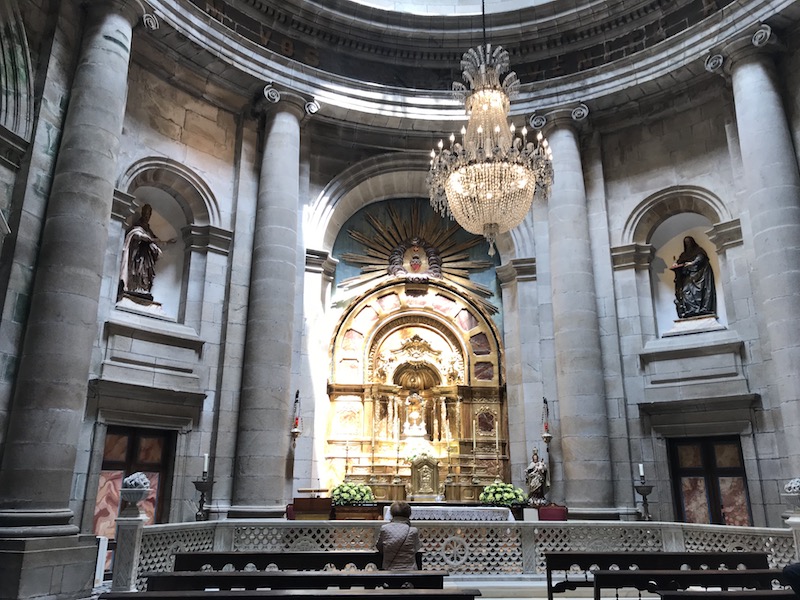

The Capilla de la Corticela seems like an old, Romanesque church.

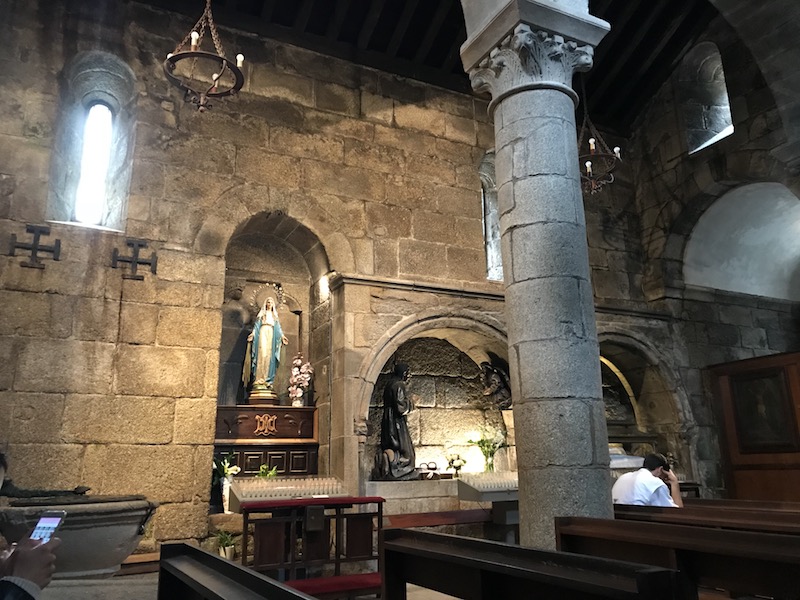
The statue of Santiago Matamoros (Santiago as a slayer of Moors) which was sculpted in the second half of the 18th century.
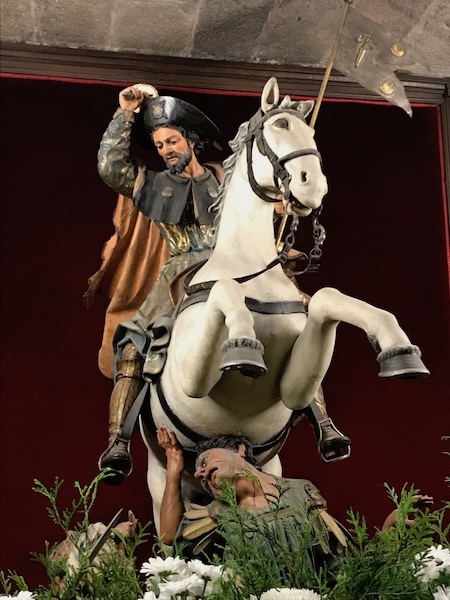
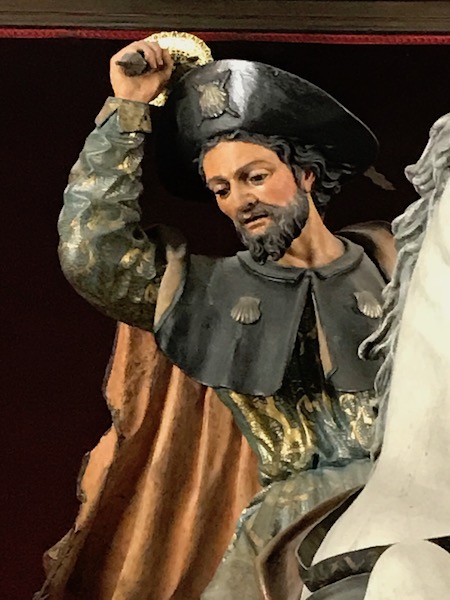
This is the East façade, or da Quintana (it overlooks Quintana Square). This façade was completed in 1700, with 2-story columns. In the niches over the door are statues of Saint James and his disciples (Athanasius and Theodore). On the bottom and sides of the door were placed 24 figures of prophets and apostles (here I show 12 from one of the sides, along with some close-ups of what I thought were the best preserved).

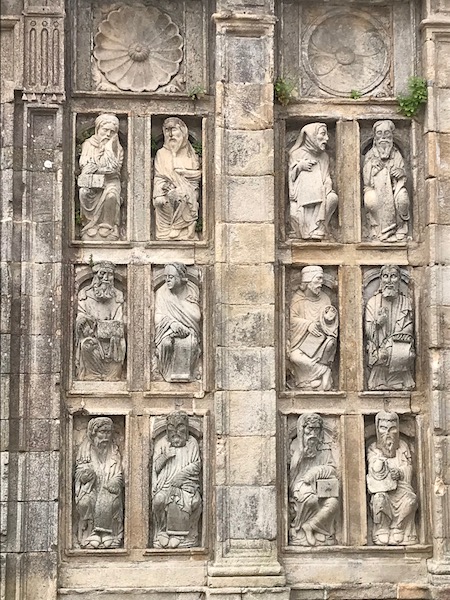
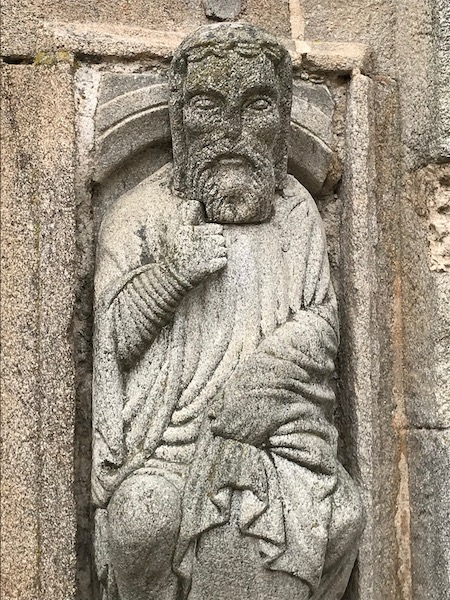
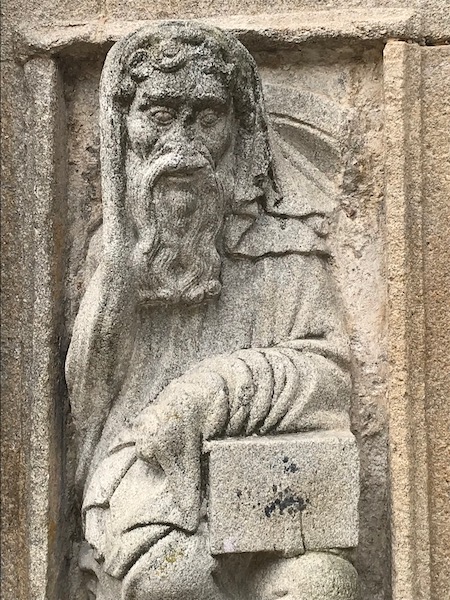
Just around the corner, with a grand staircase, is the Baroque-styled Mosteiro de San Martiño Pinario. It is now a seminary and while it seems we may have been able to get into the church from a different way, the main part including the cloister isn't open to the public.
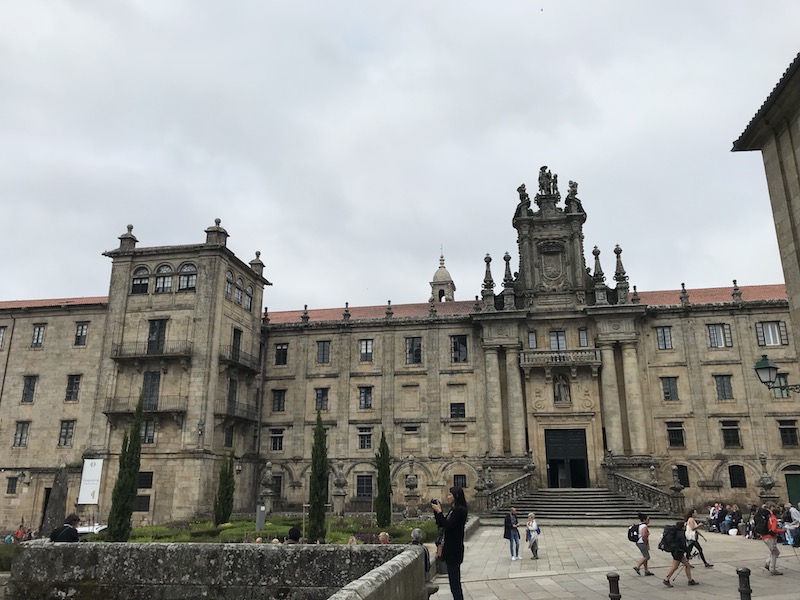
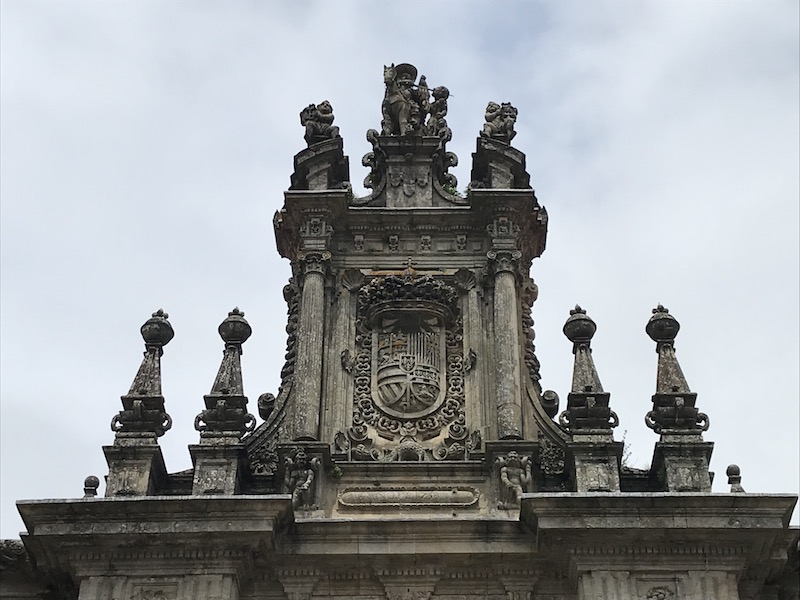
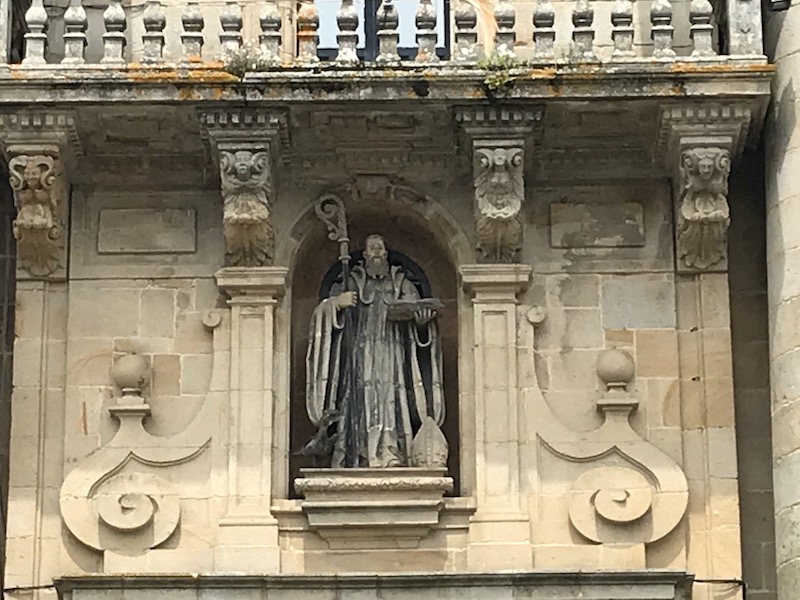
As you can see, we didn't do much in Santiago de Compostela other than the Cathedral and it's immediate surroundings. Now ... on to Portugal!